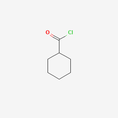If C=O α- There are three groups with different volumes in the C-chain, which will cause different space barriers on both sides of the carbonyl plane, creating space selectivity for nucleophiles to attack the carbonyl group. We use L, M and S to express them respectively α- The three groups on C are large, medium and small.
Addition reaction
Nucleophilic addition reaction
α,β- The nucleophilic addition of unsaturated ketones can also be divided into two cases, 1,2-addition and 1,4-addition. α,β- 1,4-addition of unsaturated aldehydes and ketones is actually equivalent to 3,4-addition.
michael addition
There are carbon negative ions formed by active methylene compounds α,β- The nucleophilic addition of carbon carbon double bonds of unsaturated carbonyl compounds is an important method for alkylation of active methylene compounds. This reaction is called Michael reaction. The most important application of Michael's addition is Robinson ring increasing reaction. If cyclic ketone is used as the donor of Michael reaction, and reacts with methyl vinyl ketone (receptor), the product 1,5-diketone can be obtained. The latter can add a new six membered ring to the original ring through the condensation and dehydration of intramolecular hydroxyl aldehyde. This process is called Robinson ring increasing reaction.
Robinson forms a ring
From the point of view of modern organic synthesis, Robinson cyclization reaction is actually a series reaction. It is a series reaction formed by a Michael addition and aldol condensation. At the beginning of the reaction, the nucleophilic enolate formed by a carbonyl compound attacks a α,β- Unsaturated ketone, with Michael addition. The product then undergoes intramolecular aldol condensation to obtain Robinson cyclization reaction product.




